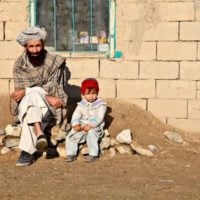In the ever-evolving landscape of global challenges, the role of Non-Governmental Organizations (NGOs) has become increasingly vital. These organizations often serve as the bridge between communities in need and the resources required to address pressing issues. However, the effectiveness of NGOs is frequently contingent upon their ability to forge strong partnerships with donors.
These partnerships are not merely transactional; they are collaborative relationships that can amplify the impact of initiatives aimed at social change. By understanding the dynamics of NGO-donor partnerships, organizations can better position themselves to secure funding, enhance their programs, and ultimately create lasting change. The importance of these partnerships cannot be overstated.
Donors, whether they are government agencies, private foundations, or individual philanthropists, bring not only financial resources but also expertise, networks, and credibility. For NGOs, aligning with the right donors can lead to innovative solutions and sustainable practices that address complex social issues. Moreover, effective partnerships can foster transparency and accountability, ensuring that funds are utilized efficiently and that the intended beneficiaries receive the support they need.
As we delve into various case studies, it becomes clear that successful NGO-donor collaborations can lead to transformative outcomes for communities around the world.
Case Study 1: Empowering Women in Rural Communities through Microfinance Programs
One exemplary case of a successful NGO-donor partnership is the collaboration between a microfinance NGO and a prominent international development foundation focused on women’s empowerment. This partnership aimed to provide financial services to women in rural communities who traditionally lacked access to banking facilities. By offering microloans, savings accounts, and financial literacy training, the NGO was able to empower women to start their own businesses, improve their families’ economic conditions, and gain greater autonomy in their lives.
The impact of this initiative was profound. Women who participated in the microfinance program reported increased income levels and improved quality of life for their families. For instance, one participant used her loan to purchase livestock, which not only provided a steady source of income but also enhanced her family’s nutrition.
The partnership with the donor allowed the NGO to scale its operations, reaching more women and expanding its services. This case illustrates how targeted funding and strategic collaboration can lead to significant social change, particularly in empowering marginalized groups.
Case Study 2: Providing Education and Healthcare to Underserved Populations in Developing Countries
Another compelling example of effective NGO-donor collaboration is found in an initiative aimed at providing education and healthcare services to underserved populations in developing countries. An NGO focused on holistic community development partnered with a philanthropic organization dedicated to improving health and education outcomes globally. Together, they implemented a comprehensive program that included building schools, training teachers, and establishing mobile health clinics.
The results were remarkable. In communities where this program was implemented, school enrollment rates increased significantly, and children had access to essential healthcare services that were previously unavailable. For instance, in one rural area, the establishment of a mobile clinic reduced child mortality rates by providing vaccinations and maternal health services.
The donor’s financial support enabled the NGO to invest in infrastructure and human resources, while the NGO’s on-the-ground expertise ensured that the programs were culturally relevant and effectively addressed community needs. This partnership exemplifies how collaborative efforts can lead to sustainable improvements in education and health for vulnerable populations.
Case Study 3: Combating Climate Change and Environmental Degradation through Sustainable Development Projects
In the face of climate change and environmental degradation, NGOs play a crucial role in advocating for sustainable practices and implementing projects that protect natural resources. A notable case is the partnership between an environmental NGO and a corporate donor committed to sustainability. Together, they launched a project aimed at reforestation and promoting sustainable agriculture practices in a region severely affected by deforestation.
The project not only focused on planting trees but also engaged local farmers in adopting eco-friendly agricultural techniques that would enhance soil health and increase crop yields. Through workshops and training sessions funded by the corporate donor, farmers learned about organic farming methods and the importance of biodiversity. The results were twofold: not only did the reforestation efforts contribute to carbon sequestration and habitat restoration, but local farmers also experienced improved livelihoods as they transitioned to more sustainable practices.
This case highlights how partnerships between NGOs and corporate entities can lead to innovative solutions for environmental challenges while simultaneously benefiting local communities.
Case Study 4: Supporting Refugees and Internally Displaced Persons with Humanitarian Aid and Assistance
The ongoing global refugee crisis has necessitated urgent action from NGOs working alongside donors to provide humanitarian aid and assistance to refugees and internally displaced persons (IDPs). One impactful partnership involved an international humanitarian NGO collaborating with a government agency focused on refugee resettlement. Together, they developed a comprehensive support program that included emergency relief supplies, access to legal assistance, and integration services for refugees.
This partnership proved essential in addressing the immediate needs of displaced individuals while also facilitating their long-term integration into host communities. For example, refugees received not only food and shelter but also language training and job placement services that helped them rebuild their lives. The donor’s commitment to supporting this initiative allowed the NGO to expand its reach and provide critical services to thousands of refugees.
This case underscores the importance of coordinated efforts between NGOs and donors in responding effectively to humanitarian crises.
Key Takeaways and Lessons Learned from Successful NGO-Donor Partnerships
The exploration of these case studies reveals several key takeaways regarding successful NGO-donor partnerships. First and foremost, alignment of goals is crucial; both parties must share a common vision for the impact they wish to achieve. This alignment fosters trust and collaboration, enabling innovative solutions to emerge from their combined efforts.
Additionally, transparency in communication is vital for maintaining accountability and ensuring that funds are utilized effectively. Moreover, flexibility is essential in adapting programs to meet evolving community needs. Successful partnerships often involve ongoing dialogue between NGOs and donors, allowing for adjustments based on feedback from beneficiaries.
Finally, measuring impact is critical; both NGOs and donors should establish clear metrics for success to evaluate the effectiveness of their initiatives continually. In conclusion, the power of NGO-donor partnerships lies in their ability to create meaningful change across various sectors. By learning from successful collaborations, NGOs can enhance their strategies for securing funding and building lasting relationships with donors, ultimately leading to greater social impact in communities around the world.








































